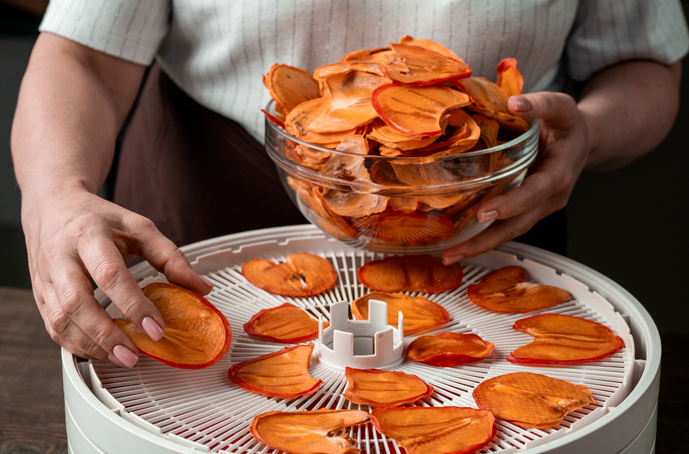Your cart is empty!
Make checkout easy by booking all your reservations at once. Add your sites from different campgrounds into your shopping cart* and then choose checkout.


Reposted from the KOA blog:
The focus for prepping camping food is typically on the meals that are at the heart of your day, and meals are definitely a high priority. However, we’d be lying if we said snacks weren’t also a very important part of the camping experience, and though maybe not an absolute necessity, snacks are something we don’t want to go without.
The snacks that are typically remembered for camping tend to be the ones that lean more towards the unhealthy side. We are talking chips and candy. These are easy to grab last-minute or during your road trip en route to your camping site, but they aren’t the ones you want to make a habit of eating. This is especially true if you’re a regular camper. There are so many snacks out there that give you the satisfaction and the fuel to make the most of your time in nature. And our favorite way of making those snacks is by dehydrating some of our favorite foods.
If you’ve ever wanted to dehydrate some snacks but didn’t know how, read on for our guide to dehydrating the perfect camping snacks.
The first step in dehydrating food is to get a dehydrator. Without this tool, you may not have much luck.
There are a number of different dehydrators on the market to choose from. Though they may offer different bells and whistles than others, for the most part they are the same. That is unless you get into the high price range of dehydrators. You can get this kitchen accessory for anywhere between $30 and $200.
In order to know you’re getting a dehydrator that will do the job, here are the key things to look out for that are a sign of a good machine.
If you aren’t exactly sure of how much you’ll be using this machine, and to what extent, it’s a good idea to start off with a less expensive model. Then you can work your way up from there, if necessary.
What you put in isn’t what you get out. While that may seem obvious, we mean that the amount of food you put into your dehydrator will not be the same amount of food you get out. As the food loses moisture in this machine, the food shrinks a great deal. This means that drying an entire pound of apples only results in a cup of dehydrated apple slices.
It is also important to cut the food in thin, even slices. This will help to ensure even cooking and help to keep food from spoiling. If you have slices of food that weren’t dried fully, they run the risk of ruining the entire batch in storage.
Fruit
The best fruit for drying is fruit that is high-quality and was picked when ripe. If you swing to the overripe side of things, you run the risk of the fruit turning black when you dry it.
If you choose to leave the skins on, make sure you wash them and then either remove the core or pit. Then you’re ready to slice them and lay them flat on the tray.
Fruits including apples, bananas, nectarines, and peaches take anywhere from 6-16 hours to dry. And fruits such as grapes, pears, and figs take between 20-36 hours to dry. It’s best to check on the fruit every 2-3 hours to make sure everything is cooking evenly.
Vegetables
Chances are good you were surprised at how long dehydrating fruits such as grapes take. Thankfully, vegetables don’t take as long to get the job done. However, they also spoil more quickly. That means you need to take more care when preparing your vegetables for drying.
A good place to start is ensuring you keep them in the fridge until you’re ready to dry. And when you are ready, you want to remove any tough pieces as well as the stem (if applicable). Also, take care to cut off any bruises or spots that may spoil the vegetable further. Cut the pieces as evenly as possible and lay them out on the tray.
Drying times for vegetables range from 4-10 depending on the vegetable you are making.
Storage is one of, if not the, most important parts of the drying process. If you store the food correctly, dried fruit can last up to 5 years, and vegetables up to 10 years. However, that requires proper storage.
If you know that you’re going to eat the dried fruit within a year, a Ziploc bag works great for storage, as long as you squeeze all the air out.
If you imagine it will be more than a year before you get into the snacks you dried, then vacuum-seal the food and store it in a cool and dark place.
But always use good judgment before eating. If the food smells a bit off, don’t risk it and throw it away. You don’t want to get sick from eating spoiled food.
Here are some of our favorite snacks to make with your dehydrator.
This tasty treat is a great alternative to less-healthy options and is perfect for a snack while out hiking.
What you need:
What to do:
This quick snack is great fresh or dehydrated.
What you need:
What to do:
This salty snack will quickly become a favorite.
What to do:
Take a tasty snack and make it healthy.
What you need:
What to do:
This sweet treat is a new way to do dessert.
What you need:
What to do:
Leslie, a.k.a. Copy Girl, is a copywriter who gets butterflies from telling stories through words.
Her voice comes from a place filled with passion, dreams, and lots of sugar. “Cake over steak” is her go-to motto.
With over 10 years of experience in crafting words, and years of embarking on travels that have taken this Montana girl to some incredible places, Leslie love the adventures of both body and mind her writing takes her on.
Everywhere she goes, she takes this advice with her:
“Hold on to your divine blush, your innate rosy magic, or end up brown.” – Tom Robbins, Jitterbug Perfume
To see what Leslie’s up to in the writing world, visit her website here.
That doesn't mean this area has to always be empty. When you start reviewing camping options, your history will display here to help compare sites and find the best stay. You will be able to share your stay information with friends or family and save it for a later time if you have a KOA Account.
Make checkout easy by booking all your reservations at once. Add your sites from different campgrounds into your shopping cart* and then choose checkout.